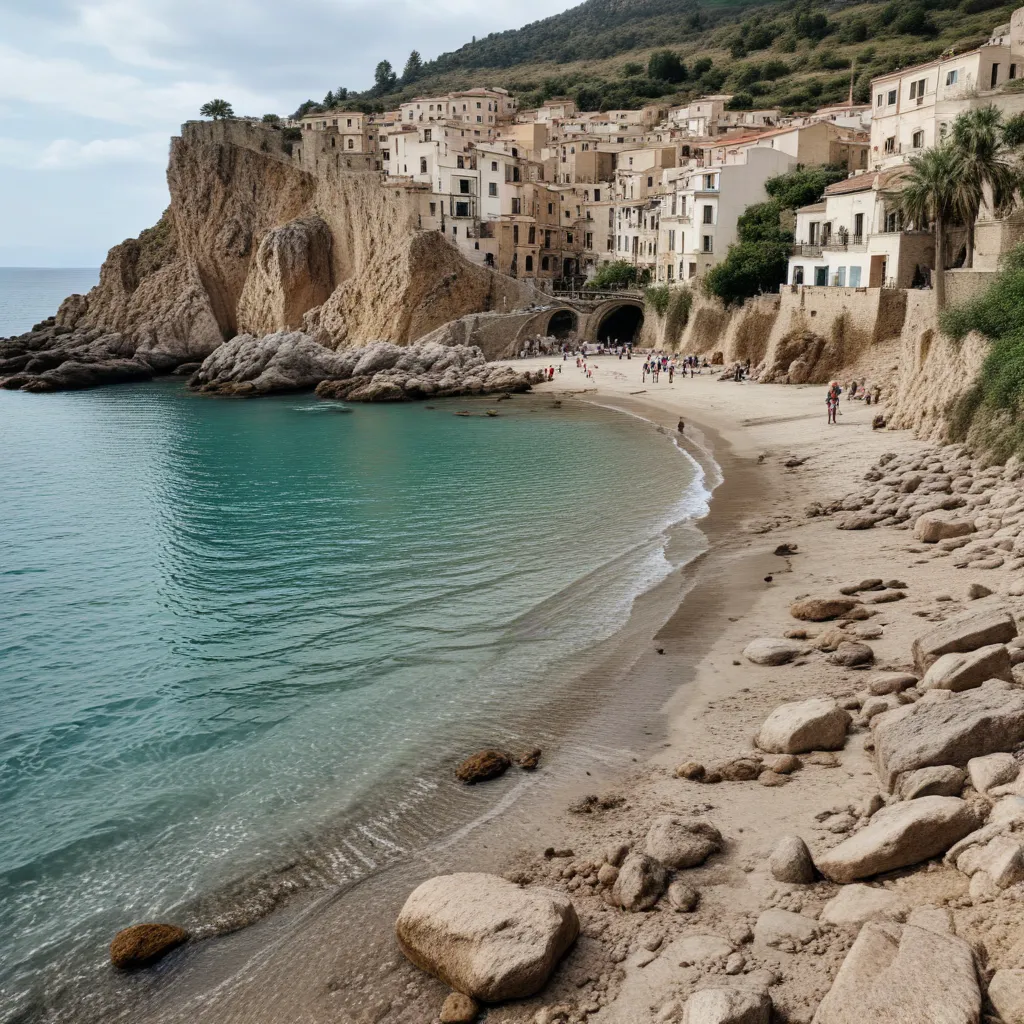
Perched atop a rugged promontory jutting into the Tyrrhenian Sea, the historic town of Cefalu offers visitors a delightful blend of cultural heritage, natural beauty, and exceptional culinary experiences. As a vintner and hospitality enthusiast, I recently had the opportunity to immerse myself in the charms of this Sicilian gem during a week-long stay in October 2024.
Geography of Cefalu
Cefalu is situated on the northern coast of Sicily, approximately 65 kilometers east of the regional capital, Palermo. The town’s distinctive geography is defined by the imposing La Rocca, a 268-meter-high limestone cliff that dominates the landscape. This dramatic headland, connected to the mainland by a narrow isthmus, creates a natural harbor on the eastern side and a broad, sandy beach stretching to the west.
The town’s microclimate is influenced by its coastal location, with moderate temperatures averaging 25-30°C during the day and cooling to around 20°C at night in October. The Tyrrhenian Sea, which laps at Cefalu’s shores, is typically calm, though occasional bouts of choppy conditions can make swimming inadvisable, as I witnessed during my stay.
History of Cefalu
Cefalu’s origins date back to the 4th century BC, when the ancient Greeks established a settlement on the headland, naming it Kefaloidioin. The town’s strategic position made it an important outpost, guarding the nearby Greek city of Himera. Over the centuries, Cefalu changed hands numerous times, coming under the sway of the Romans, Byzantines, Arabs, and Normans before becoming part of the Kingdom of Sicily.
The town’s crowning glory is undoubtedly the magnificent Norman Cathedral, commissioned in 1131 by King Roger II. This Romanesque-Byzantine masterpiece, with its striking twin towers, is a UNESCO World Heritage site, renowned for its exquisite 12th-century mosaics in the apse. The Cathedral’s commanding presence, visible from miles out to sea, is a testament to Cefalu’s enduring importance throughout the medieval period.
Cultural Attractions in Cefalu
Beyond the Cathedral, Cefalu’s historic center is a delight to explore, with its picturesque, narrow streets lined with balconied buildings, charming piazzas, and a wealth of artisanal shops. One of the town’s most iconic landmarks is the Rocca, the imposing clifftop fortress that rewards visitors who make the uphill climb with breathtaking views over the town and coastline.
Other must-see sites include the 16th-century Fountain of Shame, a Renaissance masterpiece adorned with nude statues, and the enigmatic “Temple of Diana,” a pre-Christian structure of uncertain origin perched on the slopes of the Rocca. Cefalu’s rich history is further reflected in its numerous churches, such as the Arab-Norman Church of San Cataldo, with its distinctive red-domed roof.
Culinary Delights of Cefalu
The culinary offerings of Cefalu are a true highlight for any visitor. As a food & wine pairing enthusiast, I was delighted to discover the town’s abundance of exceptional restaurants and trattorias, each showcasing the bounty of Sicily’s fertile land and pristine seas.
One of my favorite dining experiences was at Ristorante Gigi, where I indulged in a tasting menu that celebrated the region’s seasonal produce. I began with a delicate arancino (fried risotto ball) filled with saffron-infused rice, followed by a sublime pasta alla Norma, featuring eggplant, tomatoes, and fragrant basil. The main course of juicy swordfish involtini, wrapped in prosciutto and drizzled with a citrus reduction, was perfectly complemented by a crisp, minerally Grillo from a nearby winery.
No visit to Cefalu would be complete without sampling the town’s renowned gelato. I was particularly impressed by Gelatomania, a family-owned gelateria that crafts its flavors using traditional techniques and the finest local ingredients, such as Bronte pistachios and Avola almonds.
Exploring the Surrounding Region
While Cefalu and its immediate surroundings were the primary focus of my visit, I also had the opportunity to venture further afield, exploring the vibrant city of Palermo, just an hour away by train. In Palermo, I was captivated by the stunning Arab-Norman architecture, including the Palazzo dei Normanni and the Cathedral, which showcase the region’s rich cultural heritage.
One of the highlights of my Palermo excursion was a visit to the historic Ballarò Market, where I was immersed in the sights, sounds, and aromas of Sicilian gastronomy. Browsing the stalls, I encountered an abundance of fresh produce, artisanal cheeses, and traditional street food, offering a tantalizing glimpse into the daily life and culinary traditions of the Sicilian people.
Reflections on My Cefalu Experience
My time in Cefalu was indeed a rejuvenating and enriching experience, as I had hoped. While the town’s bustling streets and lively social scene provided ample opportunities for exploration and discovery, the peaceful setting of my hotel, the Sea Palace, allowed me to truly unwind and savor the tranquility of this remarkable destination.
As a wine & health enthusiast, I was particularly struck by the role that the Mediterranean diet – so celebrated in Cefalu – plays in promoting wellbeing. The abundance of fresh seafood, locally grown produce, and high-quality extra virgin olive oil in the regional cuisine underscored the inherent health benefits of this style of eating.
Throughout my stay, I was also inspired by the town’s rich history and cultural heritage, which seemed to permeate every aspect of daily life. From the awe-inspiring Cathedral to the ancient ruins of the Rocca, Cefalu’s deep connection to the past was a constant reminder of the enduring spirit of this remarkable Sicilian gem.
As I bid farewell to Cefalu and return to my own winemaking journey back home, I am left with a profound appreciation for the harmonious fusion of nature, history, and culinary excellence that defines this enchanting town. I eagerly anticipate my next visit, eager to further explore the wine education and garden tips that Cefalu has to offer.
